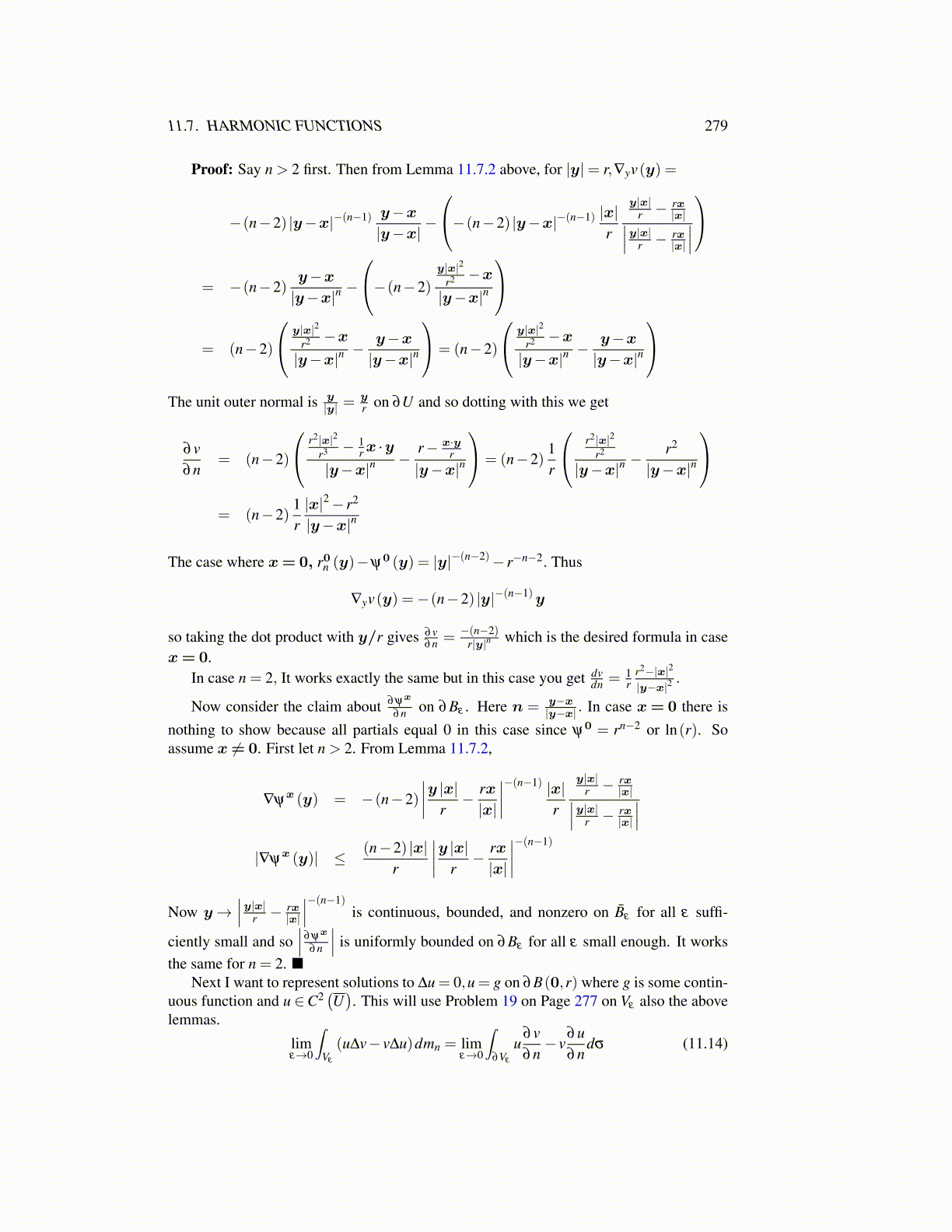
11.7. HARMONIC FUNCTIONS 279
Proof: Say n > 2 first. Then from Lemma 11.7.2 above, for |y|= r,∇yv(y) =
−(n−2) |y−x|−(n−1) y−x
|y−x|−
−(n−2) |y−x|−(n−1) |x|r
y|x|r −
rx|x|∣∣∣y|x|r −rx|x|
∣∣∣
= −(n−2)y−x
|y−x|n−
−(n−2)y|x|2
r2 −x
|y−x|n
= (n−2)
y|x|2r2 −x
|y−x|n− y−x
|y−x|n
= (n−2)
y|x|2r2 −x
|y−x|n− y−x
|y−x|n
The unit outer normal is y
|y| =yr on ∂U and so dotting with this we get
∂v∂n
= (n−2)
r2|x|2r3 − 1
rx ·y|y−x|n
−r− x·y
r|y−x|n
= (n−2)1r
r2|x|2r2
|y−x|n− r2
|y−x|n
= (n−2)
1r|x|2− r2
|y−x|n
The case where x= 0, r0n (y)−ψ0 (y) = |y|−(n−2)− r−n−2. Thus
∇yv(y) =−(n−2) |y|−(n−1)y
so taking the dot product with y/r gives ∂v∂n = −(n−2)
r|y|n which is the desired formula in casex= 0.
In case n = 2, It works exactly the same but in this case you get dvdn = 1
rr2−|x|2
|y−x|2.
Now consider the claim about ∂ψx
∂n on ∂Bε . Here n = y−x|y−x| . In case x= 0 there is
nothing to show because all partials equal 0 in this case since ψ0 = rn−2 or ln(r). Soassume x ̸= 0. First let n > 2. From Lemma 11.7.2,
∇ψx (y) = −(n−2)
∣∣∣∣y |x|r− rx|x|
∣∣∣∣−(n−1) |x|r
y|x|r −
rx|x|∣∣∣y|x|r −rx|x|
∣∣∣|∇ψ
x (y)| ≤ (n−2) |x|r
∣∣∣∣y |x|r− rx|x|
∣∣∣∣−(n−1)
Now y→∣∣∣y|x|r −
rx|x|
∣∣∣−(n−1)is continuous, bounded, and nonzero on B̄ε for all ε suffi-
ciently small and so∣∣∣ ∂ψx
∂n
∣∣∣ is uniformly bounded on ∂Bε for all ε small enough. It worksthe same for n = 2. ■
Next I want to represent solutions to ∆u = 0,u = g on ∂B(0,r) where g is some contin-uous function and u ∈C2
(U). This will use Problem 19 on Page 277 on Vε also the above
lemmas.
limε→0
∫Vε
(u∆v− v∆u)dmn = limε→0
∫∂Vε
u∂v∂n− v
∂u∂n
dσ (11.14)